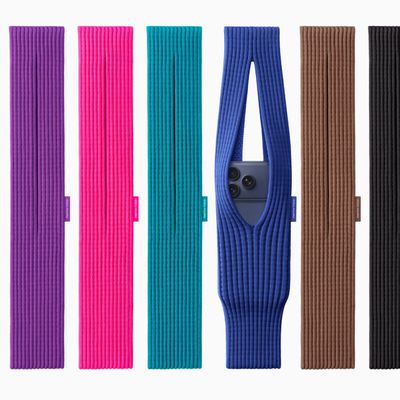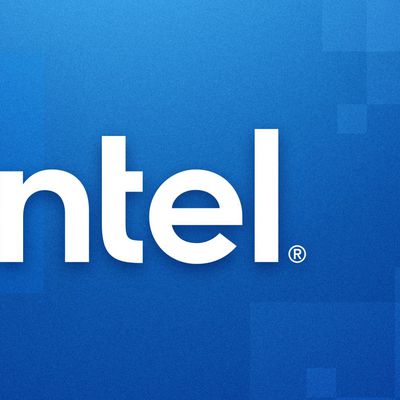Mac Update Cycle Faces Uncertainty as Intel Abandons Tick-Tock Strategy
In its latest 10-K annual report (PDF) filed last month, Intel confirmed the end of its long-heralded "tick-tock" strategy of delivering new microprocessors to the market. Intel originally introduced the product cadence to the world in 2006 with the launch of the "Core" microarchitecture, alternating "ticks" of shrinking chip fabrication processes with "tocks" of new architectures.
Over the past ten years, Intel has successively delivered new processor families based on this tick-tock cycle on a nearly annual cycle from its 65 nm manufacturing node all the way up until recently. The tick-tock release cycle allowed Intel to reestablish dominance in both the consumer and enterprise CPU markets and had given OEMs such as Apple a regular update cycle to rely on for annual product updates. But with chip updates stretching about beyond a yearly cycle in recent generations, Apple's product launch cycles have started to be affected.
In the face of the difficulties in maintaining the tick-tock cadence, Intel has announced that the launch of Kaby Lake this year as the third member of the 14-nm family following Broadwell and Skylake will mark the official end of the tick-tock strategy. Instead, Intel will move to a new "Process-Architecture-Optimization" model for the current 14 nm node and the 10 nm node.

As part of our R&D efforts, we plan to introduce a new Intel Core microarchitecture for desktops, notebooks (including Ultrabook devices and 2 in 1 systems), and Intel Xeon processors on a regular cadence. We expect to lengthen the amount of time we will utilize our 14nm and our next-generation 10nm process technologies, further optimizing our products and process technologies while meeting the yearly market cadence for product introductions.
This development is not unexpected, as semiconductor foundries have had increasingly tough times creating smaller process nodes as fabrication of smaller transistors has become increasingly expensive and complex. Transistors are rapidly approaching the physical limits of traditional semiconductor geometries, and the famous Moore's Law regarding transistor density has been formally acknowledged to no longer be valid.
Intel has no doubt moved to this new release model in an attempt to get back to a regular product and platform cadence as it struggles with the technological challenges of bringing new fabrication nodes to volume production. As noted in our Mac Buyer's Guide, many of Apple's Macs have gone without update for the longest time since we began tracking them, though Apple has yet to update to the available Skylake microarchitecture for its Mac line. Some product uncertainty is due to continue as the launch of Intel's Kaby Lake microarchitecture has been recently delayed to the second half of 2016 after Skylake suffered similar setbacks last year.
Popular Stories
Apple recently teamed up with Japanese fashion brand ISSEY MIYAKE to create the iPhone Pocket, a limited-edition knitted accessory designed to carry an iPhone. However, it is now completely sold out in all countries where it was released.
iPhone Pocket became available to order on Apple's online store starting Friday, November 14, in the United States, France, China, Italy, Japan, Singapore, ...
Netflix has quietly removed the ability to cast content from its mobile apps to most modern TVs and streaming devices, including newer Chromecast models and the Google TV Streamer.
The change was first spotted by users on Reddit and confirmed in an updated Netflix support page (via Android Authority), which now states that the streaming service no longer supports casting from mobile devices...
Apple AI chief John Giannandrea is stepping down from his position and retiring in spring 2026, Apple announced today.
Giannandrea will serve as an advisor between now and 2026, with former Microsoft AI researcher Amar Subramanya set to take over as vice president of AI. Subramanya will report to Apple engineering chief Craig Federighi, and will lead Apple Foundation Models, ML research, and ...
Cyber Week is here, and you can find popular Apple products like AirPods, iPad, Apple Watch, and more at all-time low prices. In this article, the majority of the discounts will be found on Amazon.
Note: MacRumors is an affiliate partner with some of these vendors. When you click a link and make a purchase, we may receive a small payment, which helps us keep the site running.
Specifically,...
We're getting closer to the launch of the final major iOS update of the year, with Apple set to release iOS 26.2 in December. We've had three betas so far and are expecting a fourth beta or a release candidate this week, so a launch could follow as soon as next week.
Past Launch Dates
Apple's past iOS x.2 updates from the last few years have all happened right around the middle of the...
The updated specs of the M5 iPad Pro may point toward a major new feature for Apple's next-generation Studio Display expected in early 2026.
Apple's latest iPad Pro debuted last month and contains one display-related change that stands out: it can now drive external monitors at up to 120Hz with Adaptive Sync. The feature should deliver lower latency, smoother motion, and fewer visual...
Apple is expected to launch a new foldable iPhone next year, based on multiple rumors and credible sources. The long-awaited device has been rumored for years now, but signs increasingly suggest that 2026 could indeed be the year that Apple releases its first foldable device.
Subscribe to the MacRumors YouTube channel for more videos.
Below, we've collated an updated set of key details that ...
While all Macs are now powered by Apple's custom-designed chips, a new rumor claims that Apple may rekindle its partnership with Intel, albeit in a new and limited way.
Apple supply chain analyst Ming-Chi Kuo today said Intel is expected to begin shipping Apple's lowest-end M-series chip as early as mid-2027.
Kuo said Apple plans to utilize Intel's 18A process, which is the "earliest...
Cellular carriers have always offered big savings on the newest iPhone models during the holidays, and Black Friday 2025 sales have kicked off at AT&T, Verizon, T-Mobile, and more. Right now we're tracking notable offers on the iPhone 17, iPhone 17 Pro, iPhone 17 Pro Max, and iPhone Air. For even more savings, keep an eye on older models during the holiday shopping season.
Note: MacRumors is...

























